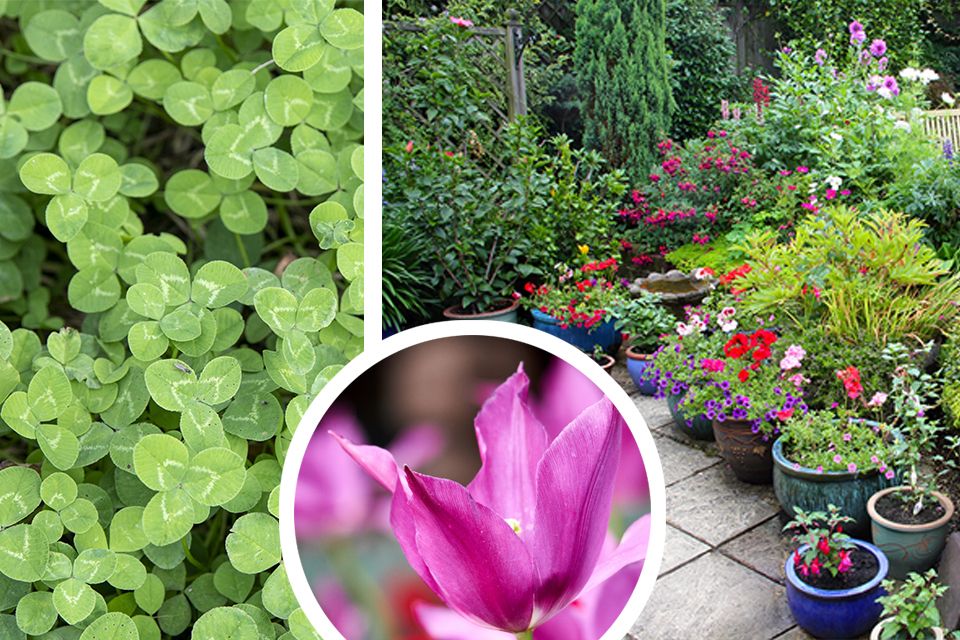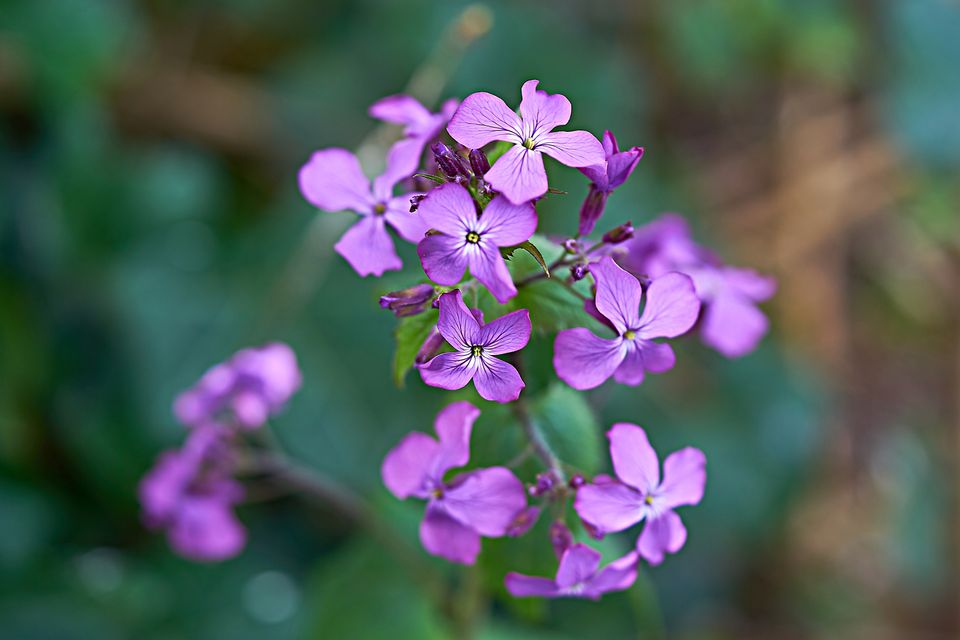Growing in pots, clover lawns and exposed borders — Diarmuid Gavin answers your top five gardening questions
From repairing waterlogged lawns to picking the best border plants, our expert shares his tips




It’s Gardeners’ Question Time this week. My inbox is packed with questions from readers so, in addition to my usual Q&A, I’ve picked five others, including an interesting one about the potential of a clover lawn. Happy gardening!
Can you grow anything in pots – plants and trees?
With good care, there’s not a lot that you can’t grow in pots. This is indicated by a visit to any garden centre, where trees, shrubs, flower bulbs and fruit trees are all in pots. Or think of roof gardens. Google Derry & Tom’s London rooftop garden, which was on Kensington High Street, and you’ll see the images of mature gardens with trees and shrubs, all growing on top of a building with very little access to soil.
What you have to consider for anything big is where the pot or container is going to be placed, and if you are using a tree such as birch, beech or Carpinus, is it anchored well, because you don’t want it rocking around. Secondly, it’ll be growing in the pot soil for a long time so make sure you give it really good soil from the start.
Drainage is really importan t — roots of plants need oxygen as well as water. So make sure that there are good drainage holes and some layers of pebbles at the base. Don’t let the containers dry out during the summer. And for anything that is going to be living in that pot for a long time, top-dress it annually. This means gently removing the first couple of inches of compost or soil from the top and replacing with fresh, nutrient-rich growing medium every year.
Clover lawns — yes or no?
Even the fact that the question is being asked is wonderful as it indicates an openness to getting away from traditional lawns, which have dominated our towns and suburbs for hundreds of years. A clover lawn could be a great idea depending on how you are going to use it.
Clover is a ground-covering plant which flowers in summer and it’s quite delightful. Its form can look like a small field of mini hillocks. The flowers will attract all sorts of pollinators and it has a wonderful smell. However, if you fancy a roll in the clover, you might get stung. It needs little maintenance — certainly no feeding and just a light mowing every so often.
Today's News in 90 Seconds - April 24th
What are the best plants for open, exposed borders?
If you think of open, exposed sites in the natural world, that will often bring you to coastal places. So choose some plants that have evolved to grow in windswept locations where they may have the added challenge of salt-laden air.
Often plants with a silvery hue created by hundreds of microscopic hairs over the foliage will do the job, so think olearias, astelia, rosemary (especially the ground-hugging variety), escallonia and elaeagnus or toughies like holly and birch and mountain ash. A lot will depend on your soil type. If it’s a spongey bog, mimic the highlands and plant heather.
Read more
What can I do about a waterlogged lawn?
We have had a lot of rain, more than usual, so even good, functioning lawns are saturated. However, your problem may be more severe. If your lawn is waterlogged, it means the base material on which the lawn was planted is most likely compacted. You often get this in new-build houses, where heavy machinery has been driven across the gardens before they were gardens and then a skim of top soil spread over them.
As with any other plant, the lawn’s success will depend on what it is growing in, and to repair this could be a big job. At a minimum, this will mean rotavating the lawn to a substantial depth and adding in plenty of good-quality, free-draining top soil before re-turfing or re-seeding the lawn. If it’s very bad, it may require installing some drains, which is most likely a job for an expert.
What to do with tulips that have been in the ground for years and only produce lush leaves?
I would dig them up and throw them out. Most of the tulips we plant are highly bred and often only perform really well for one year. Those that do reflower are often smaller or paler. However, if you buy species tulips such as the lovely Tulipa humilis, they will naturalise and perform as perennials, returning in flower every year.
Plant of the week
Lunaria annua
Lunaria annua, Honesty Butterflies love this biennial plant, as it provides valuable nectar during March and April, and gardeners love it for its luminescent pink and purple flowers. It’s a great self-seeder once it’s established and looks perfect in cottage or informal gardens. Easy to grow, it’ll do well in the sun or shade. The seed heads are really beautiful — translucent papery discs which you can dry upside down for flower arrangements.
Reader Q&A
I’m looking for suggestions for planting around a brand new gravel path? It’s pretty sunny and I’d like something easy to manage. Emily
Lavender
The plant I’d go for to frame both sides of the path is lavender. It loves a free-draining situation such as this in full sun, and a successful small hedge of lavender could look like something from a Jane Austen novel. Maintenance is a yearly trim after flowering to keep the plant compact. If, however, your soil is heavy, you can get the same effect by using Nepeta, also known as catmint — this has pale-blue flowers and minty-smelling foliage that will be gorgeous to brush past on a path.
Submit your gardening questions to Diarmuid via his Instagram @diarmuidgavin using the hashtag #weekendgarden
Join the Irish Independent WhatsApp channel
Stay up to date with all the latest news




















